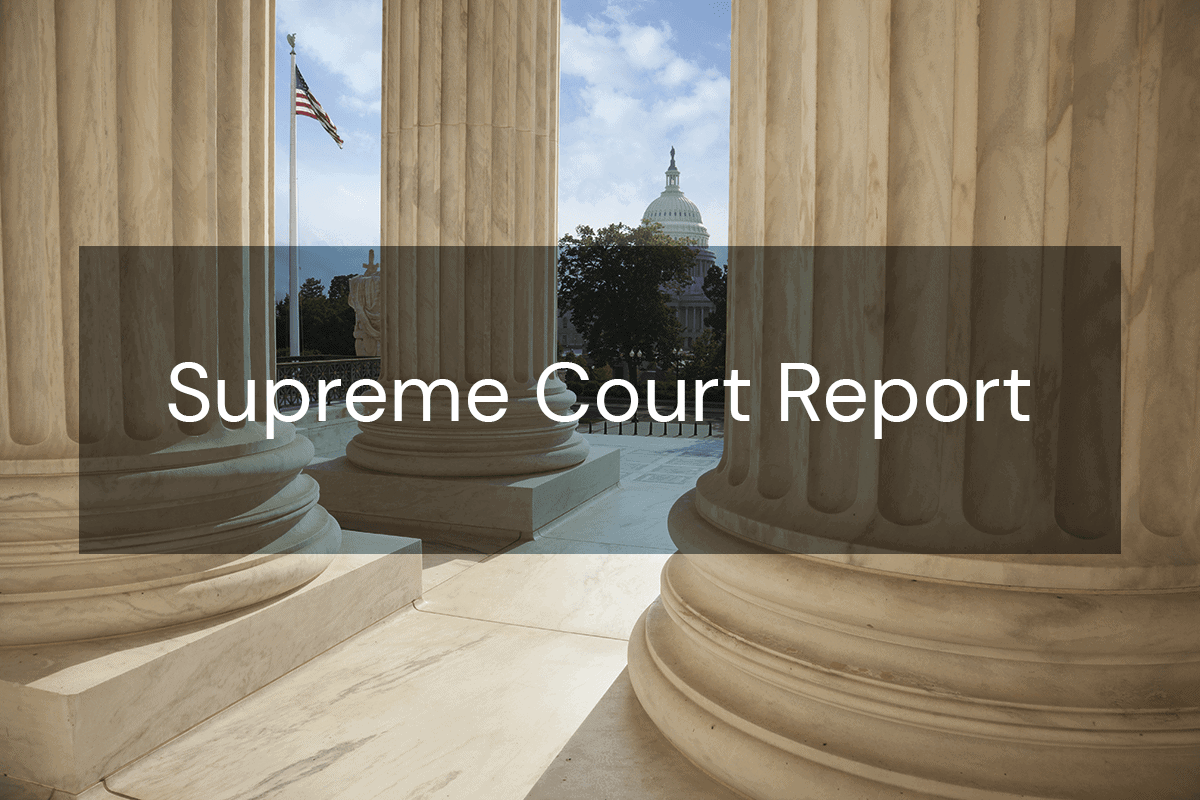-
 Director, Center for Supreme Court AdvocacyNational Association of Attorneys General
Director, Center for Supreme Court AdvocacyNational Association of Attorneys General

This Report summarizes opinions issued on October 18, 2021 (Part I); and cases granted review on that date (Part II).
Opinion: City of Tahlequah, OK v. Bond, 20-1668
City of Tahlequah, OK v. Bond, 20-1668. The Court summarily reversed a Tenth Circuit decision that had denied qualified immunity to two police officers who shot and killed a suspect after the suspect raised a hammer “behind his head and took a stance as if he was about to throw the hammer or charge at the officers.” Dominic Rollice’s ex-wife called 911 to report that Rollice was in her garage, was intoxicated, and would not leave. Three officers responded to the call. They encountered Rollice at the side entrance to the garage and engaged him in conversation. When Officer Girdner gestured with his hands and took a step forward, Rollice took a step back and then turned around and walked toward the tools at the back of the garage. Disobeying an order to stop, Rollice kept walking and grabbed a hammer. He held it with both hands and pulled it up to shoulder level. Disobeying orders to drop the hammer, Rollice moved to where he had a clear view of Officer Girdner, “then raised the hammer higher back behind his head and took a stance as if he was about to throw the hammer or charge at the officers.” The officers fired their weapons, killing Rollice. Rollice’s estate filed a §1983 suit against the officers, alleging they violated his Fourth Amendment right to be free from excessive force. The district court granted the officers’ motion for summary judgment, but the Tenth Circuit reversed. It explained that its precedent “allows an officer to be held liable for a shooting that is itself objectively reasonable if the officer’s reckless or deliberate conduct created a situation requiring deadly force.” And it concluded “that a jury could find that Officer Girdner’s initial step toward Rollice and the officers’ subsequent ‘cornering’ of him in the back of the garage recklessly created the situation that led to the fatal shooting.” The Tenth Circuit found that several cases, particularly Allen v. Muskogee, 119 F.3d 837 (10th Cir. 1997), clearly established that the officers’ conduct was unlawful. Through a per curiam opinion, the Court reversed.
The Court concluded that none of the cases upon which the Tenth Circuit relied “clearly established” that the officers’ “conduct was reckless or that their ultimate use of force was unlawful.” The Court found that “the facts of Allen are dramatically different from the facts here.” In Allen, the officers “responded to a potential suicide call by sprinting toward a parked car, screaming at the suspect, and attempting to physically wrest a gun from his hands.” Here, by contrast, the officers “engaged in a conversation with Rollice, followed him into a garage at a distance of 6 to 10 feet, and did not yell until after he picked up a hammer.” The Court found that the “other decisions relied upon by the Court of Appeals are even less relevant.” Because “[n]either the panel majority nor the respondent have identified a single precedent finding a Fourth Amendment violation under similar circumstances[,] [t]he officers were [] entitled to qualified immunity.”



